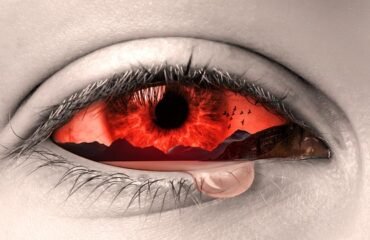Pulp fiction, genre fiction Literary Fiction and Flash Fiction are terms that refer to different categories of literature, each with its own characteristics and connotations. Let’s explore what each term means:
Pulp Fiction
Pulp fiction originally referred to a type of inexpensive paperback publication that was printed on cheap wood pulp paper. These publications were popular in the early to mid-20th century and encompassed a wide range of genres, including mystery, adventure, romance, science fiction, fantasy, and more. Pulp fiction stories were known for their fast-paced plots, sensationalism, and often lurid or dramatic cover art.
Over time, pulp fiction has evolved to also describe a style of storytelling characterised by its emphasis on entertainment, quick pacing, and sometimes sensational content. Pulp fiction often prioritises action, plot twists, and engaging storytelling over deep philosophical or psychological exploration. However, this doesn’t mean that pulp fiction cannot tackle complex themes or ideas; it simply places a higher emphasis on entertainment value.
Examples of pulp fiction
- The Shadow: Created by Walter B. Gibson, “The Shadow” is a famous pulp fiction character who appeared in a long-running series of pulp magazines. The Shadow was a vigilante crime-fighter with the ability to cloud men’s minds, and his stories blended mystery, adventure, and action.
- Doc Savage: Created by Lester Dent (writing as Kenneth Robeson), “Doc Savage” is another iconic pulp fiction character. Doc Savage is a scientist, physician, and adventurer who battles villains and uncovers mysteries. The series featured a mix of action, science fiction, and detective elements.
- The Spider: “The Spider” was a series of pulp magazines written by various authors, particularly Norvell W. Page. The stories followed Richard Wentworth, a millionaire playboy who becomes the vigilante crime-fighter known as The Spider, battling against a wide array of criminals and supervillains.
- Weird Tales: “Weird Tales” was a notable pulp magazine that specialised in publishing weird fiction, horror, and fantasy stories. It featured works by authors like H.P. Lovecraft, Robert E. Howard, and Clark Ashton Smith, contributing to the development of the horror and fantasy genres.
- The Avenger: Created by Paul Ernst (writing as Kenneth Robeson), “The Avenger” was a pulp fiction series centred around Richard Benson, a millionaire adventurer who takes on the identity of The Avenger to seek justice against those who prey on the innocent.
- Conan the Barbarian: Created by Robert E. Howard, Conan is a legendary sword and sorcery character who appeared in pulp magazines. These stories combined elements of fantasy, adventure, and action in a prehistoric setting.
Genre Fiction
Genre fiction refers to works of fiction that belong to specific literary genres, such as mystery, science fiction, fantasy, romance, horror, thriller, historical fiction, and more. These genres are defined by their specific themes, settings, and narrative conventions. Genre fiction is often categorised based on the common elements and characteristics that are shared within a particular genre.
Genre fiction can vary in its depth and complexity. While some genre fiction may prioritise entertainment and plot-driven narratives similar to pulp fiction, others can delve into intricate character development, thought-provoking themes, and social commentary. The boundaries between genre fiction and literary fiction (which often focuses on exploring human experiences and emotions) are not always strict, as many works can blend elements of both.
Examples of genre fiction
- The Lord of the Rings by J.R.R. Tolkien (Fantasy)
- Pride and Prejudice by Jane Austen (Romance)
- Murder on the Orient Express by Agatha Christie (Mystery)
- Dune by Frank Herbert (Science Fiction)
- Dracula by Bram Stoker (Horror)
Literary Fiction
Literary fiction is a term used to describe works of fiction that prioritise exploring human experiences, emotions, and complex themes. Literary fiction often places a strong emphasis on character development, psychological depth, and stylistic experimentation. While literary fiction can incorporate elements of various genres, it tends to be more concerned with the artistic and intellectual aspects of storytelling rather than adhering strictly to genre conventions.
Examples of literary fiction
- To Kill a Mockingbird by Harper Lee
- The Great Gatsby by F. Scott Fitzgerald
- One Hundred Years of Solitude by Gabriel García Márquez
- Beloved by Toni Morrison
- Moby-Dick by Herman Melville
Flash Fiction
Flash fiction, also known as micro-fiction or short-short story, is a very brief form of storytelling characterised by its extreme brevity. It aims to convey a complete narrative or idea in a very compact space, typically ranging from a few words to around 1,000 words, although there’s no strict word count limit. Flash fiction is known for its concise and impactful writing style. It often focuses on a single character, situation, or moment and aims to evoke emotions, create a sense of atmosphere, or deliver a surprising twist, all within a limited word count. Due to its brevity, flash fiction requires writers to make every word count and often relies on implication and suggestion rather than detailed exposition.
Flash fiction can cover a wide range of genres and themes, just like longer forms of fiction. Some pieces might read like complete stories, while others might be more like snapshots or glimpses into a larger narrative. The challenge of crafting a compelling narrative with limited space has led to the emergence of many creative and innovative approaches to storytelling within the flash fiction format.
Differentiation between genres and pulp fiction
The differentiation between genres and pulp fiction can be nuanced, and sometimes there is an overlap between them. Let’s take a closer look at how the genre of romance might be approached differently within genre fiction and within the context of pulp fiction:
In genre fiction, “romance” refers to stories that primarily revolve around romantic relationships and emotional connections between characters. Romance novels typically focus on the development of a romantic relationship, exploring the emotions, conflicts, and growth of the characters involved. While romance novels can vary in style and depth, they often delve into the complexities of love and relationships. These stories can range from light-hearted and uplifting to dramatic and emotionally intense.
In the context of pulp fiction, a “romance” story might be part of a larger narrative that combines elements from various genres. For instance, a pulp fiction story labelled as “romance” might include elements of adventure, mystery, danger, and excitement alongside the romantic storyline. In this context, the romance might serve as a subplot within a story that prioritises action, twists, and entertainment. Pulp fiction often blends genres to create fast-paced, engaging narratives that capture readers’ attention.
To differentiate the two:
– In genre fiction, “romance” is a central theme, and the story revolves around the romantic relationship and emotional development of the characters.
– In pulp fiction, a “romance” label might indicate that while romance is present, it is part of a larger story that emphasises action, adventure, or other genre elements.
In summary, “pulp fiction” and “genre fiction” both refer to specific types of literature with their own characteristics. Pulp fiction emphasises fast-paced entertainment, while genre fiction refers to works that fit within specific literary genres. It’s worth noting that both terms are not mutually exclusive; a piece of genre fiction can also exhibit the traits commonly associated with pulp fiction. The distinction between these terms can help readers understand the general style and themes of a given work.




